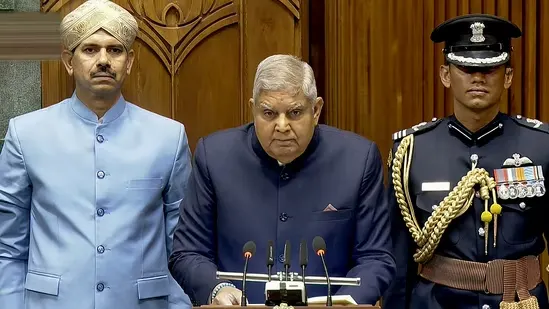On Thursday, a five-judge Constitution bench of the Supreme Court of India upheld the constitutional validity of Section 6A of the Citizenship Act, 1955, with a decisive 4:1 majority. This ruling is particularly significant in the context of Assam, a state that has faced intense debates over migration and citizenship for decades..
Understanding the intricacies of Section 6A, its historical context, and the implications of this ruling is essential for grasping the broader narrative of citizenship in India.
What is Section 6A?
Section 6A was introduced as part of the Assam Accord in 1985, following the Assam Agitation (1979-1985), a movement against illegal immigration from Bangladesh. The Accord aimed to resolve tensions between indigenous Assamese people and migrants who had settled in the state, particularly those who had come from East Pakistan (now Bangladesh).
Key Provisions of Section 6A
- Eligibility for Citizenship: Section 6A grants citizenship to migrants from Bangladesh who entered Assam before January 1, 1966. This means individuals who arrived in Assam before this cut off date can apply for citizenship, provided they meet certain criteria.
- Protection of Indigenous Rights: The provision was designed to protect the rights and interests of indigenous Assamese people. By establishing a clear cut off date, it aimed to ensure that those who had settled in the region after this date could be identified and dealt with separately, thereby preserving the demographic and cultural fabric of Assam.
- Registration Process: Individuals eligible under Section 6A must undergo a registration process to obtain citizenship. This involves verification of their residency status and compliance with legal requirements, allowing them to obtain documents that confer citizenship rights.
- Judicial Oversight: The provision includes mechanisms for judicial review and oversight through Foreigners Tribunals, which assess the citizenship claims of individuals who may be deemed foreigners.
Historical Context
The introduction of Section 6A came in response to a protracted struggle in Assam against illegal migration, which many believed threatened the socio-economic stability and cultural identity of the indigenous population. The Assam Agitation was marked by protests, violence, and significant political upheaval. The Assam Accord sought to bring peace and address the concerns of the Assamese people while offering a legal pathway for migrants who had settled in the state before the specified cut off.
The Supreme Court’s Ruling
The Supreme Court’s recent ruling affirms the constitutional validity of Section 6A amid ongoing debates surrounding illegal immigration. The ruling comes at a time when the Indian government faces scrutiny over its policies regarding migrants, especially in light of the contentious National Register of Citizens (NRC) and the Citizenship Amendment Act (CAA).
During the court proceedings, the Central government submitted an affidavit indicating that it could not provide precise data on illegal migration due to the secretive nature of such movements. This lack of data complicates efforts to understand the full scope of migration in Assam and its implications for citizenship.
The government reported that between 2017 and 2022, 14,346 foreign nationals were deported, while 17,861 migrants were granted citizenship under Section 6A during the same period. Additionally, 32,381 individuals were declared foreigners by Foreigners Tribunals, illustrating the ongoing legal challenges faced by many.
Implications of the Ruling
The Supreme Court’s decision carries significant implications for various stakeholders:
- For Indigenous Communities: The ruling reinforces the protections for indigenous Assamese people, ensuring that their rights and interests are prioritized in the face of demographic changes. Proponents argue that this legal framework is essential for maintaining cultural identity and social stability.
- For Migrants: While the ruling offers a pathway for certain migrants to obtain citizenship, it also raises concerns about those who may not meet the criteria set forth in Section 6A. Critics argue that this could perpetuate legal uncertainties and socio-economic challenges for many individuals who find themselves caught in bureaucratic processes.
- Legal Precedents: The ruling sets a legal precedent regarding the interpretation of citizenship laws in India, potentially influencing future cases related to migration and citizenship. It underscores the need for clear guidelines and processes to manage complex migration patterns.
- National Discourse on Citizenship: This ruling is likely to influence broader national conversations about citizenship, particularly in the context of the NRC and CAA. As debates around identity, migration, and rights continue, the Supreme Court’s affirmation of Section 6A will be a critical point of reference.
Conclusion
The Supreme Court’s upholding of Section 6A of the Citizenship Act is a pivotal moment in India’s ongoing discourse on citizenship, migration, and identity. By clarifying the legal framework for granting citizenship to certain migrants in Assam, the ruling attempts to strike a balance between the rights of indigenous communities and the realities faced by long-settled migrants.
As India navigates these complex issues, the implications of this ruling will resonate across the socio-political landscape, shaping future policies and influencing the lives of individuals seeking recognition and belonging. The challenges posed by migration and citizenship require nuanced and compassionate approaches, and the Supreme Court’s decision serves as a reminder of the ongoing struggle to define identity and belonging in a diverse nation.











